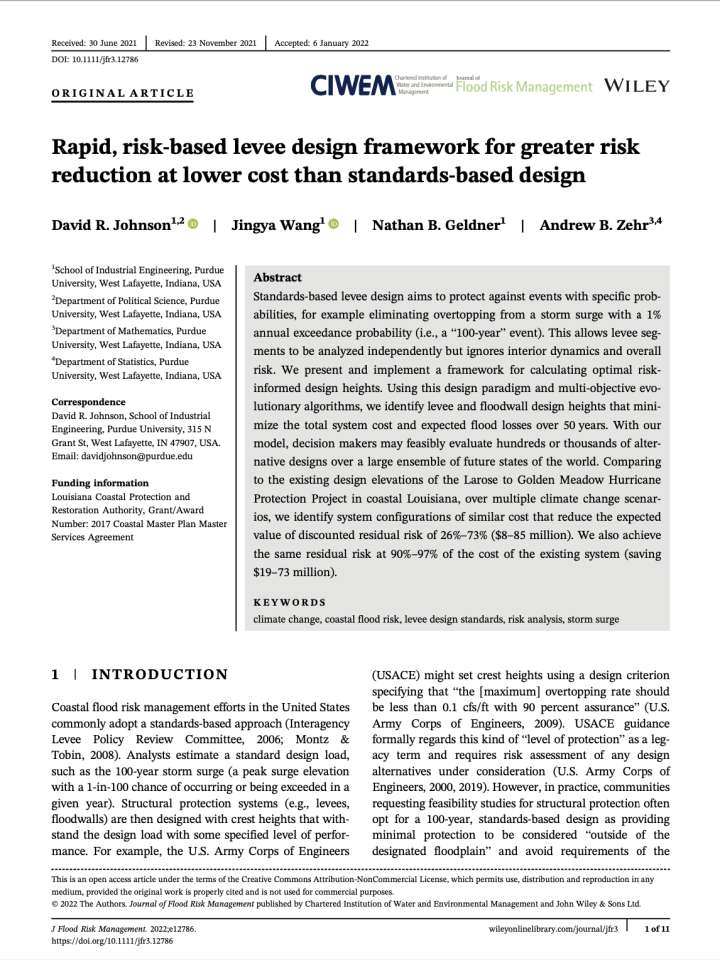Rapid, risk-based levee design framework for greater risk reduction at lower cost than standards-based design
This study presents and implements a framework for calculating optimal risk-informed design heights. Using this design paradigm and multi-objective evolutionary algorithms, the work identifies levee and floodwall design heights that minimize the total system cost and expected flood losses over 50 years. Standards-based levee design aims to protect against events with specific probabilities, for example eliminating overtopping from a storm surge with a 1% annual exceedance probability (i.e., a “100-year” event). This allows levee segments to be analyzed independently but ignores interior dynamics and overall risk.
With this model, decision makers may feasibly evaluate hundreds or thousands of alternative designs over a large ensemble of future states of the world. Comparing to the existing design elevations of the Larose to Golden Meadow Hurricane Protection Project in coastal Louisiana, over multiple climate change scenarios, the paper identifies system configurations of similar cost that reduce the expected value of discounted residual risk of 26%–73% ($8–85 million). The research also achieves the same residual risk at 90%–97% of the cost of the existing system (saving $19–73 million).
Explore further
